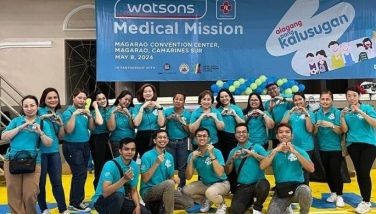Managing RP’s coastal resources
Filipinos are fish eaters. The last national nutritional survey done in 2005 proves that. It found that Filipinos prefer fish to meat and that 12 percent of a Filipino family’s daily diet consist of fish.
This is why protecting and sustaining coastal and marine resources is the only way for the
Fishery experts agree that the most effective solution is effective coastal resource management, or CRM.
The good news is that CRM is now a practical science available to all local government units (LGUs), which are tasked by the Local Government Code to lead coastal protection efforts.
The bad news is that many LGUs have a hard time practicing good CRM because CRM is a very complex undertaking. It requires proper planning, a lot of determination, and a thorough understanding of what is needed to make it work.
Aware of this difficulty, the US Agency for International Development’s (USAID) Philippine Environmental Governance 2 Project (EcoGov2) has published a new guidebook to help LGUs gain a better understanding of CRM.
The book, “Improving the Governance of Philippine Coastal and Marine Areas: A Guide for Local Government Units,” will be launched at the General Assembly of the League of Municipalities of the Philippines (LMP) at the Waterfront Hotel in Cebu City last Nov. 28.
The book is a virtual “one-stop shop” for all coastal resource managers and their staff. Aside from the user-friendly guide to CRM operations, it explains important policy and legislative listings relevant to the work. It also contains plenty of updated facts and figures.
For example: Philippine coral reefs contribute at least P70 billion annually to the economy — about 1.4 percent of GDP. One square kilometer of healthy coral reef generates an average of P2.5 million from fishing and tourism (World Bank, 2005 Philippine Environment Monitor). The economic loss of overfishing is estimated at about P1.6 billion per year in lost fish catch.
USAID published the book to help LGUs and other stakeholders to operationalize their roles and functions in the effective management of the
According to EcoGov2 head Dr. Ernesto Guiang, CRM is part of overall good environmental governance and that “improved environmental governance will redound to their own good — sustainable livelihood for their constituents, better health, reduced environmental hazards and health risks, less natural resource conflicts, and more equal distribution of natural resources.”
The LMP counts as members all of the country’s 1,510 municipalities. The municipal mayors gather each year for their General Assembly where they tackle pressing concerns and discuss the continuing development of members so they can better serve their constituents. EcoGov2 works consistently with the LMP towards this objective, particularly in the conduct of capability-building workshops for the mayors.
- Latest





























